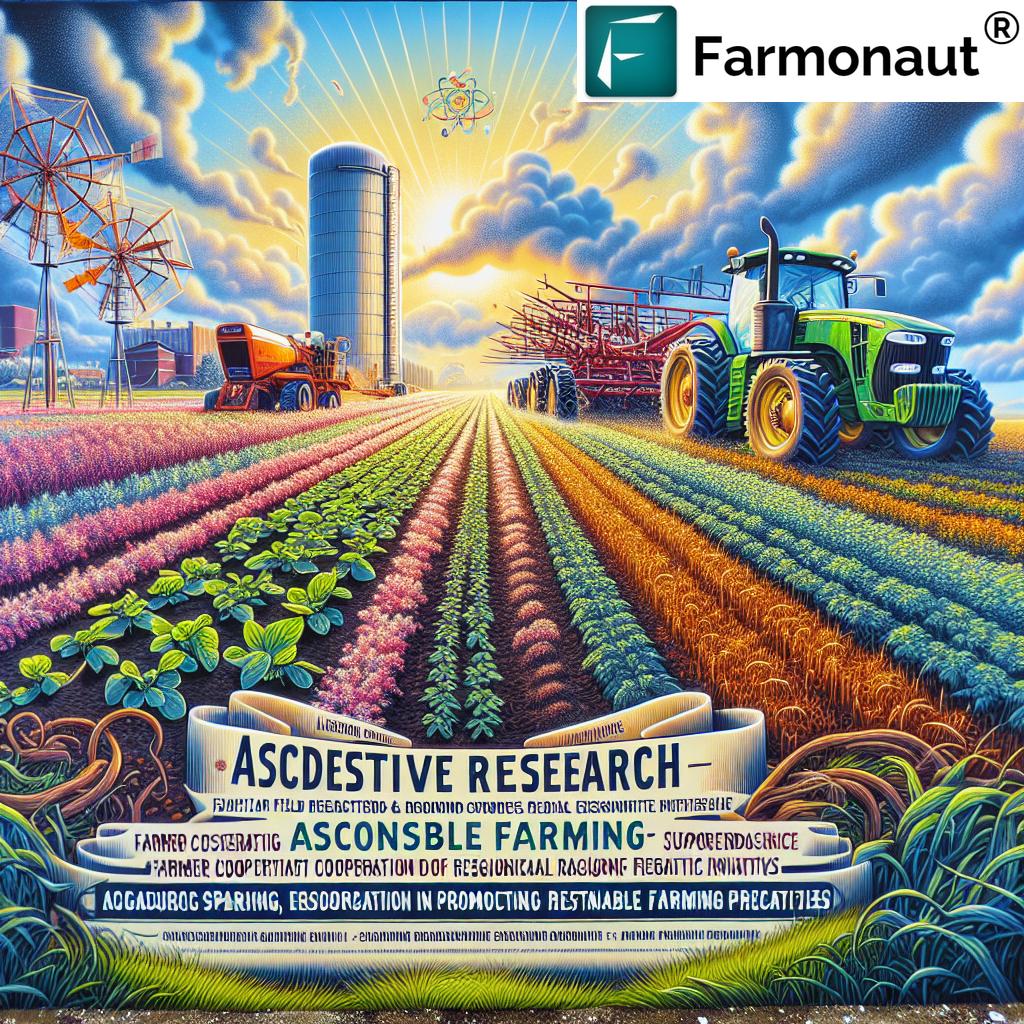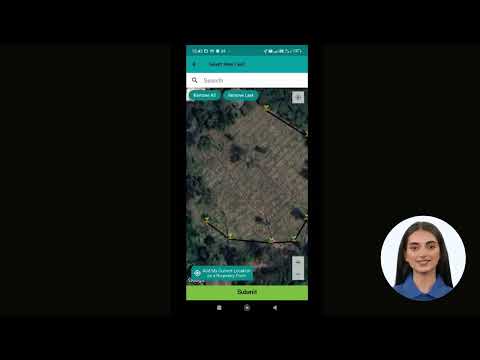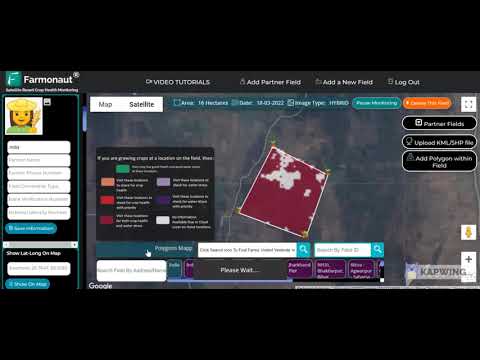Illinois Cover Crops: 7 Powerful Ways to Reduce Dust Storms
“Illinois farms using cover crops can reduce dust storm frequency by up to 40% compared to conventional practices.”
- Introduction: The Dust Storm Dilemma in Illinois
- Understanding Dust Storms: Weather vs. Farm Practices
- 7 Powerful Ways to Reduce Dust Storms in Illinois
- Illinois Cover Crops Essentials
- Conservation Tillage Practices for Dust Storm Prevention
- Smart Crop Residue Management
- Leveraging Selector Tools and Choosing the Right Species
- Unlocking Financial Incentives for Cover Crops
- Farmonaut: Satellite-Driven Solutions for Smarter, Sustainable Farming
- Comparative Impact Table: Practices vs. Dust and Soil Health
- FAQ: Illinois Cover Crops and Dust Storm Management
- Conclusion
Introduction: The Dust Storm Dilemma in Illinois
In recent years, the state of Illinois has grappled with an alarming environmental and agricultural challenge: dust storms. These extreme weather events, once rare and isolated, have begun to reappear across central Illinois with enough severity to create traffic hazards, claim lives, and jeopardize our fertile soils. The tragic 2023 interstate highway accident that took eight lives in central Illinois brought national attention to this urgent concern.
As farmers and stewards of the land, we are facing tough questions: What are the real causes behind these dust storms? Is it just a matter of spring weather variability, or do our farm management practices play a greater role? And most importantly—what are the most powerful solutions we can implement, especially around highways, to protect our families, our communities, and the long-term health of our soils?
This comprehensive guide, built on insights from the University of Illinois Extension, state agriculture research, and innovative technological leaders such as Farmonaut, explores the best strategies available—from Illinois cover crops to conservation tillage—for reducing dust storms, improving soil health, and achieving sustainable productivity on our fields.
“Conservation tillage in Illinois retains 60% more crop residue, significantly improving soil health and sustainability.”
Understanding Dust Storms: Weather vs. Farm Practices
Although shifting weather patterns, especially in spring, may seem the obvious culprit, in-depth investigations by Illinois Extension and climate specialists show that major patterns in wind, moisture, and rainfall do not fully account for the rise in dust events. Our fields tell a more complex story: changes in tillage intensity, removal of windbreaks and fence rows, increased equipment size and speed, and how we manage crop residue are all key contributors.
Conservation research has consistently shown that farm management practices directly impact the risk of dust storms. Practices like conventional tillage leave bare soil vulnerable, while no-till systems and the strategic use of cover crop species anchor the soil, decreasing the likelihood of soil blowing onto highways or into neighboring communities. At the same time, every pass with heavy machinery can increase the risk of compaction, erosion, and nutrient loss.
7 Powerful Ways to Reduce Dust Storms in Illinois
Building resilience starts with our everyday farming decisions. Based on the latest research and our successful local programs, here are seven powerful ways to prevent dust storms, support soil health, and ensure our agriculture remains sustainable:
- Reduce Tillage Passes: Limit the number of times soil is disturbed, especially near busy highways, to maintain protective crop residue cover.
- Implement Conservation Tillage: Switch from conventional to conservation tillage systems (strip-till, no-till) to leave more crop residue and reduce loose surface soil.
- Adopt No-Till Farming: No-till practices reduce exposure of soil particles and enhance retention of organic matter for improved productivity.
- Add Winter Cover Crops: Use winter-hardy cover crop species like cereal rye, winter wheat, and triticale to anchor and enrich soil throughout critical winter and early spring months.
- Optimize Crop Residue Management: Manage and retain at least 30% residue on the surface through careful equipment choices and field operations.
- Utilize Selector Tools: Use decision-support tools, such as those developed by the Midwest Cover Crop Council, to match cover crop species and mixes with your field goals.
- Participate in Conservation Incentive Programs: Benefit from a variety of financial incentives for cover crops and residue management via federal, state, and local programs.
Each of these steps, especially when combined, creates a robust system for reducing soil erosion in agriculture and sets us on a path toward resilient, future-ready farming.
Illinois Cover Crops Essentials: Reducing Dust and Enriching Soil
Embracing Illinois cover crops is one of the most effective solutions for dust storm prevention for farmers. By keeping the soil covered through the winter and into spring, we anchor loose particles, prevent erosion, and return valuable organic matter to our fields. This practice directly tackles many root causes of dust storms in statewide agriculture.
- Cereal rye, triticale, winter wheat: These winter-hardy species can be easily seeded after harvest and remain green through harsh winter months, forming living roots that bind soil until the next planting.
- Crimson clover and hairy vetch: Adapted for mixing with grass cover crops; enhances diversity, fixes nitrogen, further enriching soil health.
- Brassicas (radish, rapeseed): Excellent for deep rooting, improving infiltration and breaking up compacted soil layers.
The University of Illinois Extension recommends selecting the right species or mix based on field history and desired goals—whether that is combating erosion, reducing nutrient loss, or increasing moisture retention. Tools like the Midwest Cover Crop Selector Tool are invaluable for building a success-focused cover cropping plan.
Cover Crop Benefits for Soil Health
- Decreases soil erosion rates and buffers against wind-driven soil loss.
- Improves spring field management through earlier dry-down and improved infiltration.
- Scavenges nutrients, lowering losses from runoff and leaching into waterways.
- Builds and maintains organic matter essential for fertility and water retention.
Conservation Tillage Practices for Dust Storm Prevention
Shifting from intensive, multi-pass tillage toward conservation tillage practices dramatically lowers dust storm risk. Conservation tillage refers to various approaches—like strip-till and no-till—whereby much of the crop residue is left on the soil, acting as a physical anchor for precious topsoil.
- Strip-till: Only the crop row is tilled; the rest remains undisturbed. This was shown by the University of Illinois Extension team (Rolle, Schaefer, Nafziger, Preza Fontes) to boost soybean yields versus full tillage.
- No-till: Entire field surface remains intact and residue-covered from previous crop, significantly reducing wind-blown soil. Long-term no-till farming practices increase soil carbon, improve moisture retention, and promote high yields.
- Residue Retention: Aim for 30% or more ground cover post-harvest—a critical threshold for measurable erosion and dust control benefits.
Benefits: Farmers using conservation tillage save time, fuel, and equipment costs, reduce soil compaction, and decrease evaporation losses during dry spells.
Smart Crop Residue Management in Illinois Farms
Retaining more crop residue on the field is one of our best defenses against dust storms. Strategic crop residue management not only prevents soil from becoming airborne but also plays a crucial role in:
- Conserving soil moisture during increasingly dry spring periods.
- Creating habitat for beneficial organisms that add to the soil organic matter.
- Fostering soil structure that resists compaction from heavy equipment.
- Reducing nutrient runoff in agriculture by slowing rainwater movement across the surface.
We encourage minimizing or eliminating residue removal, burning, or excess passes with tillage implements. Less disturbance means more protection for the field and neighboring community.
Selector Tools: Identify the Right Cover Crop Species and Mixes
Deciding which cover crop species or combinations will best meet our field goals can be overwhelming. Various resources and tools, such as the Midwest Cover Crop Council Selector Tool and Illinois Sustainable Ag Partnership’s FIND Tool, help us identify region-specific cover crops, optimal seeding times, and practical recommendations for reducing erosion and maximizing nutrient holding.
- Enter your county and cropping system to get a tailored list of species.
- Match your desired outcomes: erosion, weed control, nitrogen fixation, moisture management, etc.
These tools, many free and universally accessible, enable farmers at all experience levels to confidently expand their cover crop practices.
Comparative Impact Table: Practices vs. Dust and Soil Health
| Practice/Method | Estimated Dust Reduction (%) | Soil Health Improvement Score (1-10) | Environmental Benefits |
|---|---|---|---|
| Winter Rye Cover Crop | 30–45% | 9 |
|
| Crimson Clover | 25–35% | 8 |
|
| Conservation Tillage (Strip-till) | 35% | 8 |
|
| No-Till System | 45–50% | 10 |
|
| Crop Residue Management | 20–40% | 7 |
|
Unlocking Financial Incentives for Cover Crops in Illinois
Making the transition to cover cropping and conservation tillage may seem daunting, but a broad spectrum of financial incentives for cover crops are available to offset initial costs. The Illinois Department of Agriculture offers crop insurance premium discounts, and several federal stewardship programs—such as the Conservation Stewardship Program—provide grants and technical support.
- Cost-share programs from non-government partners like Precision Conservation Management and ADM re:generations.
- Centralized resource directories, such as the Illinois Sustainable Ag Partnership’s incentive directory and the recently released FIND Tool.
- Local Extension offices can guide you in enrolling for assistance and aligning practices with available programs.
Comparing and selecting programs that meet your scale and desired outcomes is crucial. For fast access to all private and public incentives in your county, consult the ISAP FIND Tool.
Farmonaut: Satellite-Driven Solutions for Smarter, Sustainable Farming
As precision agriculture transitions from theory to practice, tools that deliver real-time, data-driven insights are transforming how Illinois farmers approach dust storm prevention, soil management, and sustainability. Farmonaut is at the forefront, providing affordable, accessible technology designed for farms of every size.
-
Satellite-Based Crop Health Monitoring: Obtain up-to-date NDVI maps and soil moisture levels to guide residue and cover crop decisions, reducing resource waste and optimizing yield.
Visit the large scale farm management platform for complete field monitoring and resource allocation support. - JEEVN AI Advisory: Receives expert recommendations using farm-specific satellite data, personalized for each field to improve crop health, manage inputs, and enhance resilience against weather extremes.
-
Resource & Fleet Management: Streamline logistics, reduce operational costs, and improve equipment safety for large and small operations.
Explore fleet and resource management features. -
Blockchain-Based Product Traceability: Track your crop’s journey for enhanced transparency, quality assurance, and consumer trust with traceability solutions.
Learn more about traceability for Illinois farms. -
Carbon Footprinting: Accurately calculate your operation’s carbon footprint and take measurable steps toward reduced environmental impact, in line with state priorities.
See Farmonaut’s carbon tracking. - API & Developer Resources: Integrate satellite and weather data into your own software via the Farmonaut API and API Developer Docs.
Farmonaut subscriptions offer flexibility—fit for individual farmers, cooperatives, or agriculture businesses. Access via web app, Android, or iOS—monitor your fields from anywhere, anytime.
FAQ: Illinois Cover Crops and Dust Storm Management
What is the primary cause of recent dust storms in Illinois?
The increase in dust storms is tied less to large-scale weather patterns and more to changed farming practices, such as increased tillage passes, residue removal, and larger exposed field areas adjacent to highways. Reducing soil disturbance and keeping the ground covered via cover crops are proven strategies for mitigation.
Which cover crop species are best for dust storm control?
Winter rye, cereal rye, triticale, and winter wheat are top choices for Illinois due to their winter hardiness and ability to establish a dense root network throughout winter and early spring.
How do conservation tillage and no-till farming practices reduce dust?
By keeping crop residue on the surface, these systems minimize the amount of exposed loose soil, reduce water evaporation, and limit soil movement during wind events, especially during traffic-intense periods on highways.
Are there financial incentives to support the adoption of cover crops in Illinois?
Yes! Programs at the state, federal, and private levels—including insurance premium discounts, cost-sharing, and grants—help offset costs and lower financial barriers for farmers interested in sustainable practices.
Where can I find more information or help with cover crop selection?
Start with your local Extension office, the University of Illinois Extension, or the Midwest Cover Crop Council’s Selector Tool. Also, review the ISAP FIND Tool for current financial programs and dealer directories.
Conclusion: Building a Sustainable, Dust-Free Future for Illinois Agriculture
Preventing dust storms in Illinois is not just a matter of fate or luck. It is about taking proactive, research-driven steps—implementing cover cropping, pursuing conservation tillage practices, precise residue management, and leveraging technological tools like those provided by Farmonaut.
As traffic, weather, and farming systems evolve, we must also evolve our management. Reducing soil erosion, improving crop yields, protecting water resources, and sustaining agricultural productivity are within our reach. With the joint efforts from state extension programs, modern farm technology, and supportive community partnerships, we can ensure a dust-free, resilient, and thriving future for every Illinois farmer, consumer, and local community.
Ready to monitor your fields, optimize your soil health, and make sustainable farming decisions?
Get started with Farmonaut today!








